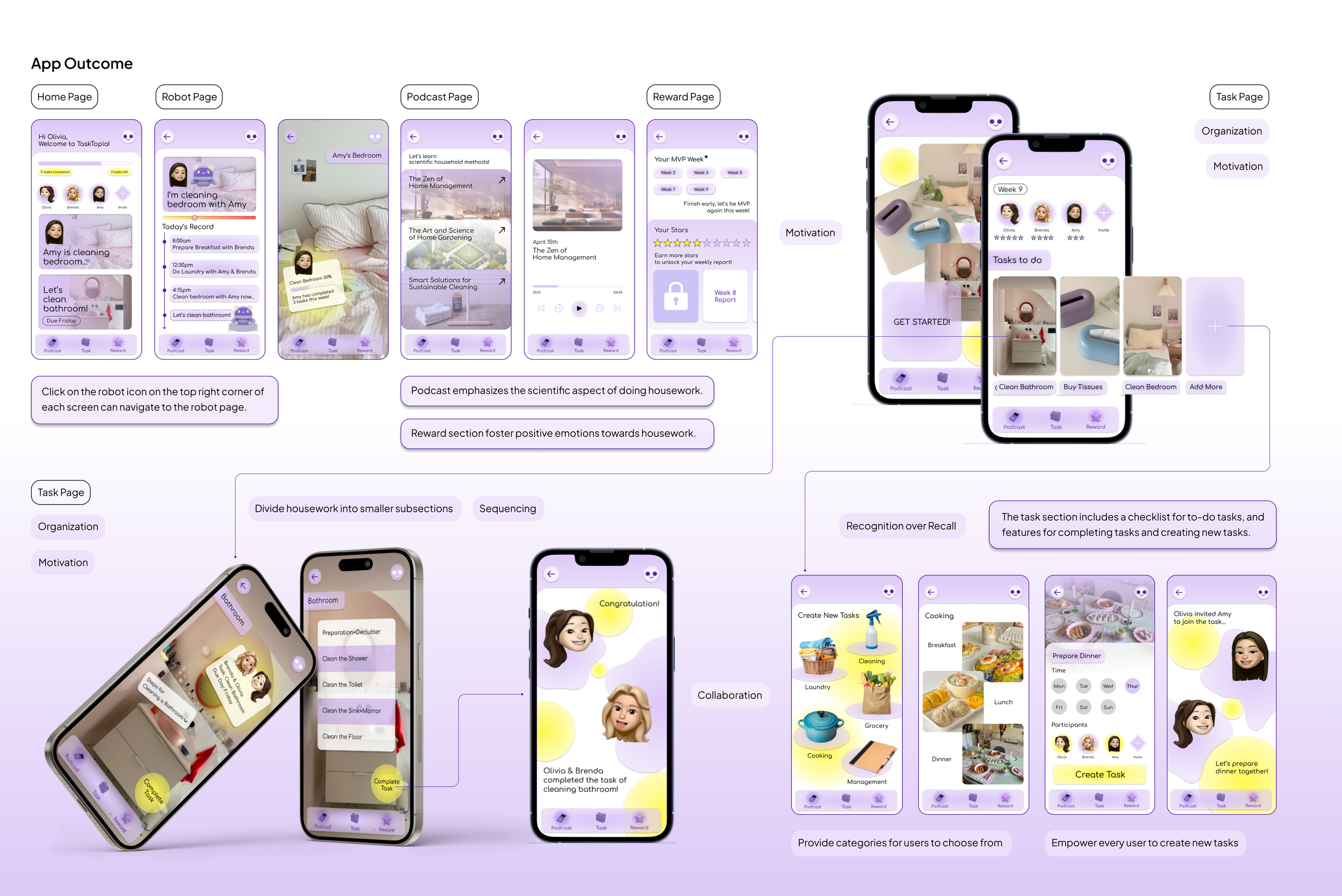Mediums: UIUX Design
Theme: Reimagine invisible labor within the household
Tools: Figma | Maya
Solo Project | 3 months | 2024
TASKTOPIA
BACKGROUND
Have you ever experienced not be appreciated by others after doing a household task?
How might we reimagine invisible labor?
Invisible labor refers to the work that individuals perform but is not recognized or rewarded. This type of labor is typically associated with tasks related to maintaining households.
METAPHOR
Current State of Doing Housework:
Affording invisible labor within households is like Sisyphus ceaselessly rolling the boulder uphill.
Future State of Doing Housework:
Doing households is like driving through to pick up a package on your way home.
LENS
-Roommates
-Couples
-Living Partners
LITERATURE RESEARCH
USER RESEARCH
PAINPOINTS
#1
Invisible household labor is overlooked due to the lack of dividing tasks into smaller sections.
#2
Household management involves huge emotional labor.
#3
Current discussion about households mostly emphasize the social aspect, often overlooking scientific dimensions.
#4
Household tasks require varied attributes based on factors that help quantify and visualize housework.
#5
Most emotions related to doing household tasks are predominantly negative.
TARGET PERSONA
COMPETITIVE ANALYSIS
USER JOURNEY
PROBLEM STATEMENT
IDEATION
INFORMATION ARCHITECTURE
STRESS CASE
Olivia live with two roommates. On Thursday, Olivia is at school, busily completing her project that is due soon. Suddenly, she realizes that it is Amy and her turn to prepare the dinner. She wants to share this task with her roommate Amy. Olivia intends to create a task for cleaning the kitchen quickly and easily on the app, and also ensuring that Amy is notified without texting her or informing her in person.
PROTOTYPING
PRODUCT RESEARCH
The Core Belief:
Invisible labor is a issue exists in doing housework.
Supporting Notions:
1. People who do housework often experience negative emotions because their efforts go unnoticed.
2. People fail to recognize the labor other roommates contribute to maintaining the household.
3. Current discussions about housework tend to overlook the scientific aspects involved.
Opposite Supporting Notions:
1. People experience positive emotions since their efforts in doing housework is noticed.
2. People recognize the labor of other roommates contribute to maintaining the household.
3. Technology should be employed to help people doing housework, which emphasizes the scientific aspect of it.
The Reframed Core Belief & Solution Space:
How to design a companion robot for users to use for housework?
PROTOTYPING
HUMAN CENTERED DESIGN
REVISION
Opportunity:
How to enhance app accessibility for users across diverse educational levels and tech proficiency?
Potential Solution:
Employ Universal Design to the app
Universal Design is an inclusive approach to design that aims to accommodate the needs of all. The belief that accessibility and usability go hand in hand is the foundation of universal design. Flexibility, adaptability, and simplicity are vital parts of it.
Next Steps:
Incorporate a calendar feature that allows users to visualize their own and others' tasks, promoting the target emotion of organization and enabling more effective time management.
Create a multiplayer game within the app to enhance collaboration among users sharing household responsibilities, while emphasizing the emotion of motivation as a key goal.




















